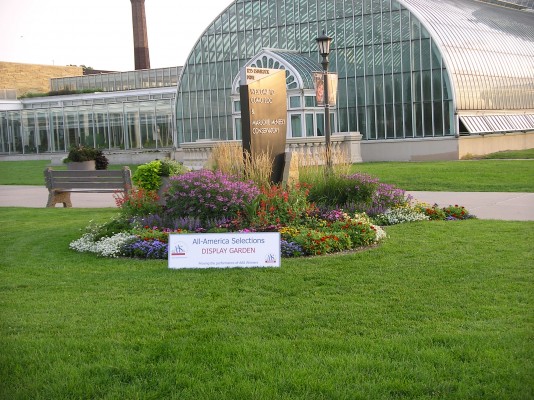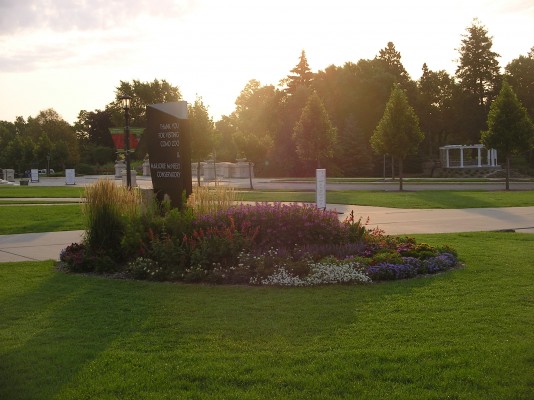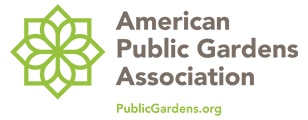From All-America Selections – In celebration of All-America Selections’ 80th Anniversary, 2012 was the roll-out year for a brand new contest for our 180+ AAS Display Gardens. This contest is a landscape design contest incorporating AAS Winners, past and present. The contest was announced in the fall of 2011 and an impressive number of Display Gardens expressed an interest in participating. By September of 2012, fifteen gardens had submitted the contest photos, proof of publicity generated, an overall description of their design and how they achieved that design. All-America Selections is extremely pleased with not only the number of gardens that participated but also the broad range of garden types: large and small public gardens, seed companies, master gardener programs and university gardens.
The rules were fairly simple:
- A list of AAS Winners used in the design must be furnished
- A minimum of 50% of the total landscaped area must be AAS Winners and be labeled as such
- There must be a written statement that describes the location of the site and the design features
- Between five and ten photographs of the design must be submitted
- Local publicity is expected and will be part of the judging criteria
- Contest is for current year plantings only
The criteria and weight in final score were as follows:
30% of the score was based on the quantity of AAS Winner varieties used
20% of the score was based on the overall attractiveness of landscape design
20% of the score was based on the creative use of AAS Winners in the design
20% of the score was based on any promotion of the display to local media and garden visitors/members
10% of the score was based on photo quality and design description/explanation
There were three categories, based on number of visitors to that garden in one year:
Category I: fewer than 10,000 visitors per year
Category II: 10,001 – 100,000 visitors per year
Category III: Over 100,000 visitors per year — Our very own Marjorie McNeely Conservatory took 3rd place in this category!
Category III: Over 100,000 visitors per year
First Place Winner: Rotary Botanical Gardens, Janesville, Wisconsin. First and foremost, the photos Rotary submitted highlighted their expertly designed garden beds that were bursting with color coming from the AAS Winners. The judges loved how engaged Rotary’s staff and volunteers were in this project and it resulted in an impressive amount of publicity in the area’s media. Rotary featured the contest in numerous press releases, blogs and Facebook posts. Plus, they used an impressive 127 AAS Winners in their landscape design—the highest number of any contest entry.
Second Place Winner: Denver Botanic Gardens, Denver, Colorado. Denver presented a very well thought-out design using the All-America Selections Winners in numerous color palettes, located in a high-traffic event area. This was one of the best examples of incorporating edibles into an ornamental display, which was a very clever way to use both vegetable and flower AAS Winners, made even better by the fact that the garden donated the vegetable produce to a local food pantry.
Third Place Winner: Marjory McNeely Conservatory, Saint Paul, Minnesota. By using their Welcome Garden as the focal point to the entrance to their conservatory, this impressive garden brought the AAS Winners front and center to their visitors. By creatively building around their already established perennial grasses, the Conservatory was able to create an eye-catching design offering perennials and annuals in a great combination using texture to its full advantage.
A complete collection of photos from all contest entrants can be found on the All-America Selections Flickr and Facebook accounts.
For more information about the contest winners or how to participate in 2013, contact Diane Blazek, All-America Selections at dblazek@aas-ngb.org.
All-America Selections is a non-profit organization founded in 1932 to test new flowers and vegetables for home gardening. We utilize a network of 70 judges in over 40 trials grounds across North America to rate entries against comparisons. We then use an active publicity program to promote the best performers that are declared AAS Winners.





